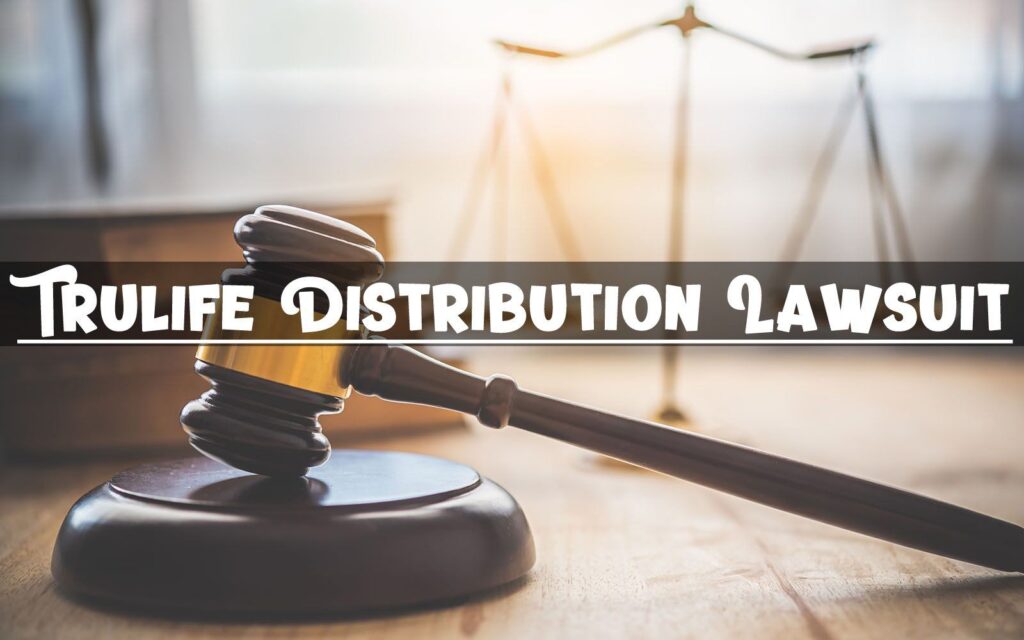Contents
Overview of the Trulife Distribution Lawsuit
The Trulife Distribution lawsuit represents a significant legal matter within the medical supply industry, primarily involving Trulife, a notable manufacturer and distributor of medical equipment. The key parties in this legal dispute include Trulife itself, various purchasers of their products, and sometimes regulatory bodies that oversee compliance and business practices within this sector. The lawsuit has emerged from a complex backdrop of allegations regarding product safety, distribution practices, and potential breaches of contract.
Initially, the claims arose after a series of complaints from healthcare providers and end-users regarding the efficacy and safety of certain medical devices distributed by Trulife. These complaints prompted investigations into the company’s quality control processes and compliance with industry regulations. The allegations suggest that Trulife may have failed to ensure that various products met the required safety standards or that they were distributed appropriately, leading to adverse consequences for patients relying on these essential devices.
Additionally, the lawsuit highlights a broader context of scrutiny surrounding the medical device industry, where manufacturers are consistently under pressure to maintain high standards due to the potential impact on patient health and safety. The Trulife distribution lawsuit sheds light on the complicated dynamics that exist between suppliers, distributors, and healthcare providers while raising essential questions about accountability and regulatory oversight. With consumers increasingly aware and vigilant, the legal implications of this case could lead to substantial changes in how companies within the medical supply chain operate and maintain transparency. It is important to monitor how this lawsuit unfolds, as its outcome could set significant precedents for the industry as a whole.
Key Allegations and Legal Arguments in the Case
The Trulife distribution lawsuit has emerged as a significant case within the realm of consumer rights and corporate responsibility. At the heart of the allegations are claims of deceptive practices and breaches of contract, suggesting that Trulife Distribution misled its clients about the nature and quality of its product offerings. Plaintiffs argue that the company’s marketing materials contained misleading information, leading to financial losses for consumers who believed they were purchasing a premium product. Additionally, the lawsuit alleges that there were significant discrepancies between the product specifications promised by Trulife and the actual items delivered to customers.
Legal arguments from the plaintiffs center on the assertion that Trulife engaged in false advertising, a claim bolstered by evidence from various consumer reports. The plaintiffs contend that Trulife’s actions not only violated consumer protection laws but also constituted unfair practices that harmed a significant number of individuals and businesses. They are seeking both compensatory and punitive damages, emphasizing the need for accountability and restitution for the alleged misconduct.
In response to these serious allegations, Trulife Distribution has mounted a robust defense strategy. The company denies any wrongdoing and asserts that its marketing practices are compliant with industry standards. They argue that the claims of false advertising are unfounded and highlight a lack of concrete evidence supporting the allegations made against them. Furthermore, Trulife contends that any discrepancies in product specifications are attributable to misunderstandings rather than intentional deceit. This defense underscores their position that the lawsuit is based on a misinterpretation of the available information rather than actual malfeasance. The case thus presents a complex interplay of consumer rights and corporate accountability, making it crucial for stakeholders to observe the developments closely.
Implications of the Trulife Distribution Lawsuit
The Trulife distribution lawsuit holds significant implications not only for the company itself but also for the wider distribution industry, its stakeholders, and consumers. As this case unfolds, it is likely to influence legal precedents that may shape future litigation involving distribution agreements, intellectual property, and contractual obligations. Legal experts are observing the proceedings closely, as decisions made in this case could potentially serve as guiding references for similar disputes in the sector.

Moreover, the outcome of the Trulife distribution lawsuit could affect market practices. If the ruling favors the plaintiffs, companies may need to reevaluate their distribution strategies and adopt stricter compliance measures to avoid similar litigation. This could lead to increased transparency in business practices throughout the industry, with greater emphasis on accountability and ethical conduct in distribution agreements.
Stakeholders, including investors and supply chain partners, are also likely to be affected. Should the lawsuit result in financial penalties or sanctions against Trulife Distribution, it may have a direct negative impact on its financial standing and market valuation. Consequently, this outcome could lead to decreased investor confidence and potential difficulties in securing funding or creating partnerships in the future. Conversely, a favorable ruling for Trulife might reinforce its market position and restore confidence among stakeholders.
From a consumer perspective, the ramifications of the Trulife distribution lawsuit could be profound. A ruling that supports consumer rights or safety may encourage similar lawsuits in the future, leading to enhanced protections against substandard practices in the distribution of products. Industry experts believe that, regardless of the outcome, the heightened scrutiny brought forth by this lawsuit will compel distributors to improve quality standards and customer service, ultimately benefiting consumers.
What to Watch for as the Case Develops
As the Trulife distribution lawsuit unfolds, there are several important aspects to monitor closely. The case progresses through multiple stages of litigation, each with significant implications for those involved. Key dates will include hearing schedules and potential ruling timelines. Keeping track of these milestones is essential, as they can provide insight into the direction of the case. The litigation may involve pre-trial motions, discovery phases, and potential settlements, all of which can be pivotal in determining the outcome.
Anticipated rulings from the court are also crucial to watch. These decisions may address pivotal motions that can significantly impact the strategy adopted by both parties. For instance, rulings on motions to dismiss could either narrow the focus of the lawsuit or allow claims to proceed, which may create ripples throughout the industry. Observers should also pay close attention to any interim court orders that may arise, as these can provide preliminary insights into the judge’s perspective on the merits of the case.
In addition to legal proceedings, public statements from the parties involved in the Trulife distribution lawsuit could provide further context about the developing situation. Stakeholders should be vigilant regarding press releases or official communications that may shed light on each side’s stance and potential actions. Legal terminology associated with the ongoing case can often be complex; therefore, resources such as legal dictionaries or guides may be beneficial for better comprehension of the discussions surrounding the lawsuit.
To stay informed, consider subscribing to legal news outlets or following dedicated blogs focusing on this case. By tracking these developments diligently, stakeholders will be better prepared to understand the implications and possible outcomes of the Trulife distribution lawsuit.
You May Also read
